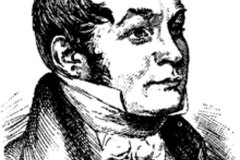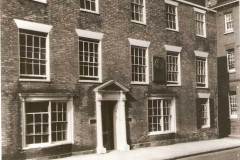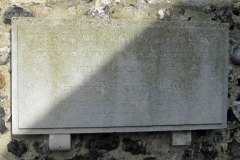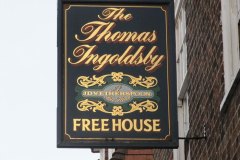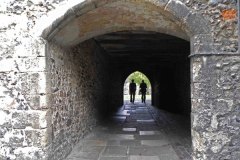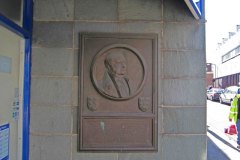Churchman & Poet (1788-1845)
Richard Barham (Image 1) was born at a large Georgian home at 61 Burgate Street (Image 2), the only and illegitimate son of Richard Harris Barham (1748-1795), and his housekeeper Elizabeth Fox. The house was destroyed by German bombing in World War II. His father Richard was a successful hop grower, alderman and ex-mayor of Canterbury, and weighed 19 stone. Four generations of the Barham family had lived in the house. Richard was baptised a few doors down the road at St Mary Magdalen church – commemorated in a stone tablet on the church tower (Image 3). His father died when Richard was only 7 years old, but he thereby inherited a small estate which financed his education away from home (St Paul’s School 1800-1807 and Brasenose College Oxford BA in 1811). He never returned to live in the city. We know little of his Canterbury childhood, but he seems to have been a spirited boy. With a school friend he entered a prayer meeting at the local Friends’ Meeting House, held up a penny tart, and awarded it to whichever worshipper spoke first. The two boys were given short shrift by Quaker officials. When 14, he was badly injured when the Dover Mail overturned – he never recovered use of his right arm. His first novel, Baldwin, was written whilst he recovered from a broken leg following an accident in a gig.
After Oxford (initially studying law but changing to divinity), Richard was ordained a curate and held several Kent parish posts before promotion to St Paul’s as a minor canon. From 1820s onward he wrote for a series of magazines and journals. His best known publication, The Ingoldsby Legends, appeared in parts during the 1840s. It became very popular – the 1881 reprint sold over 60,000 on the day of release. The book explains the name of the Wetherspoon pub in Burgate Street (Image 4). The tales drew on Barham’s knowledge of Kentish legends, the supernatural, and local tales recounted by his mother during his Canterbury childhood. One in particular, the story of Nell Cook, fascinated Canterbury readers as it relates to the ‘dark entry’ of Cathedral precincts (Image 5).
Barham died in London of a throat infection in 1845. His funeral took place in Canterbury at St Mary Magdalen in Burgate Street on 21 June. Following the fire which destroyed most of the church in 1886, his remains were reburied in Kensal Green cemetery and his memorial tablet removed to the crypt of St Paul’s. A large memorial plaque (Image 6), originally placed on 61 Burgate Street, is now fixed at the entrance to the Cancer Research charity shop.
Sources: Barham (1880); Church (1953), Crouch (1970); Oxford Dictionary of National Biography; article in Kent Companion (December 1987) by Roy Soper; also see web sites:
This Ex-classics site for text of the Ingoldsby Legends and of his son’s biography
This additional Ex-classics site for the story of Nell Cook
http://www.myjacobfamily.com/favershamjacobs/richardharrisbarham.htm for family details
DL

